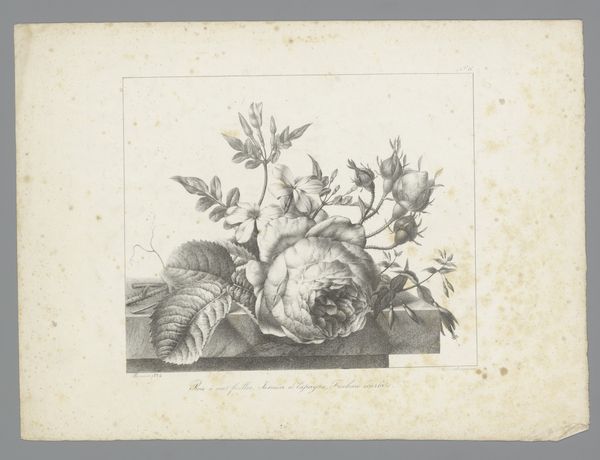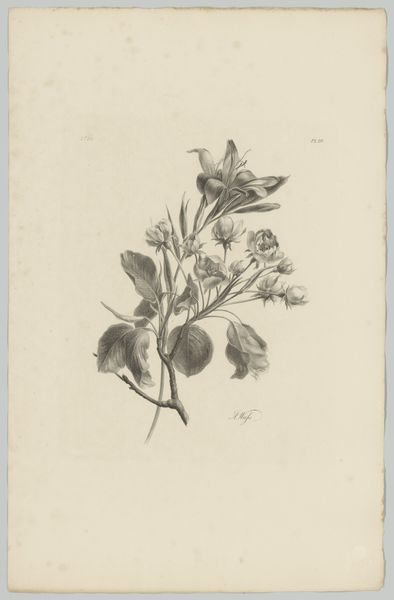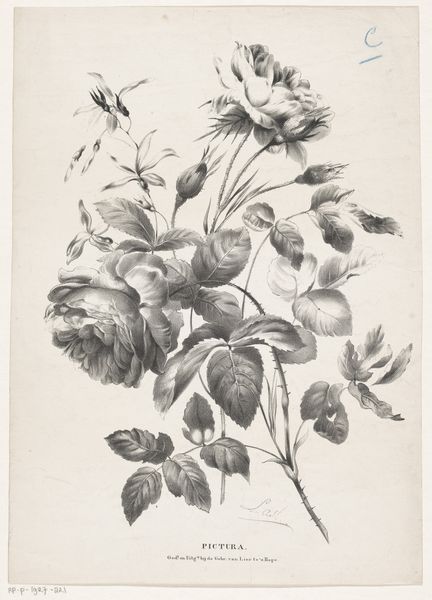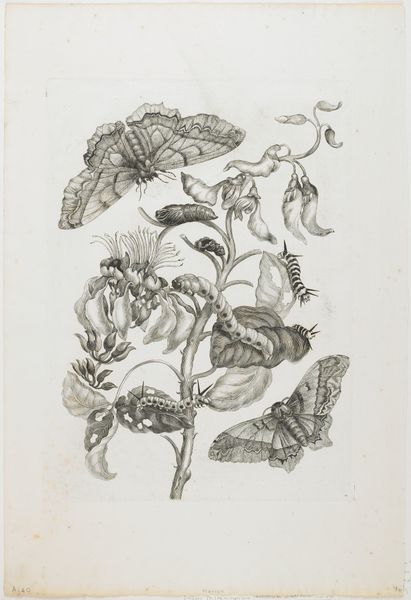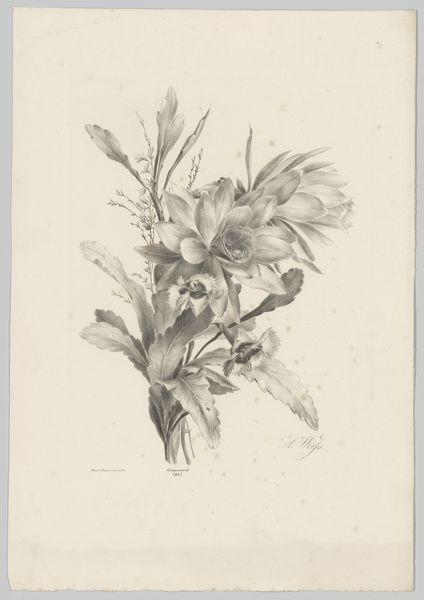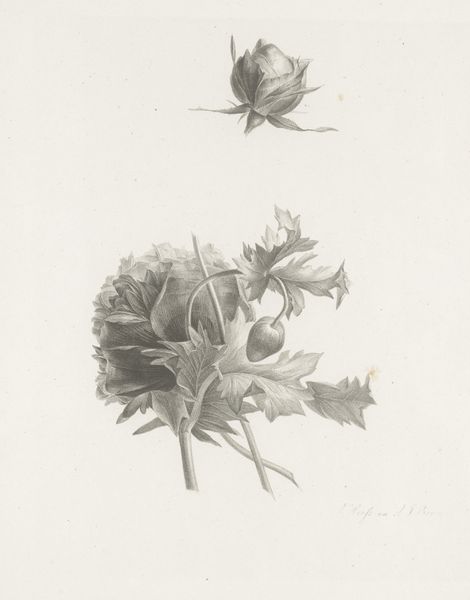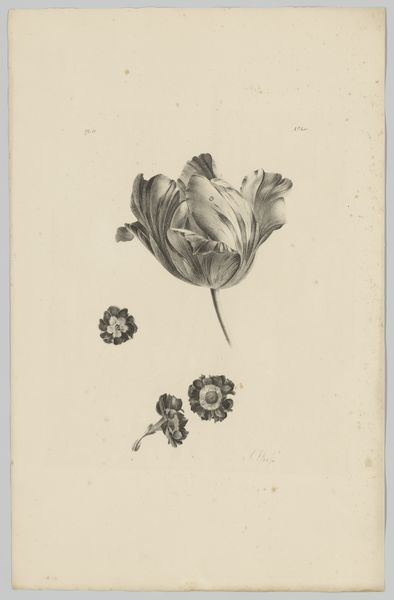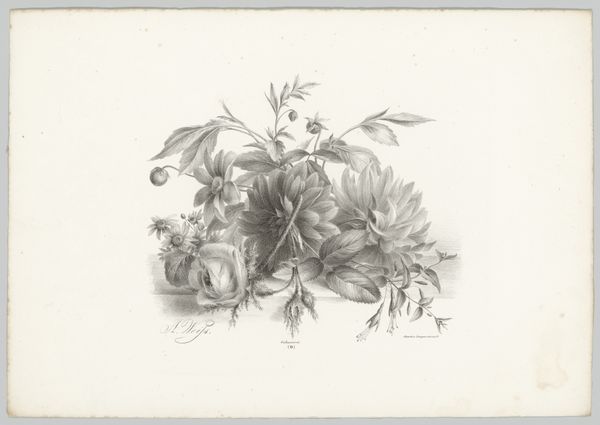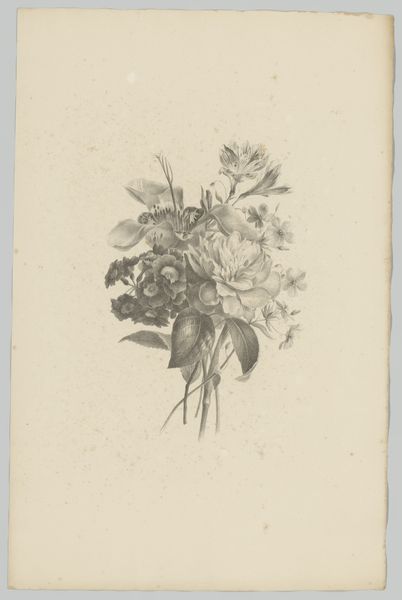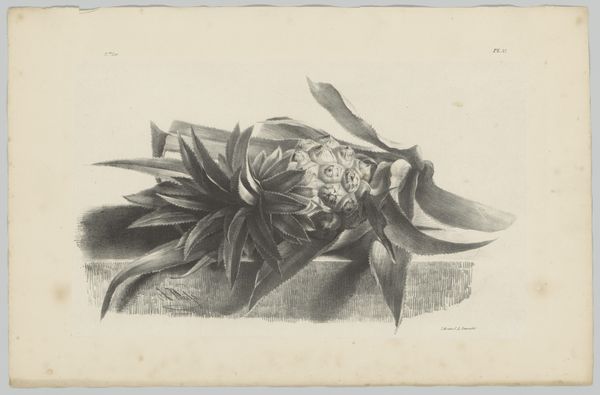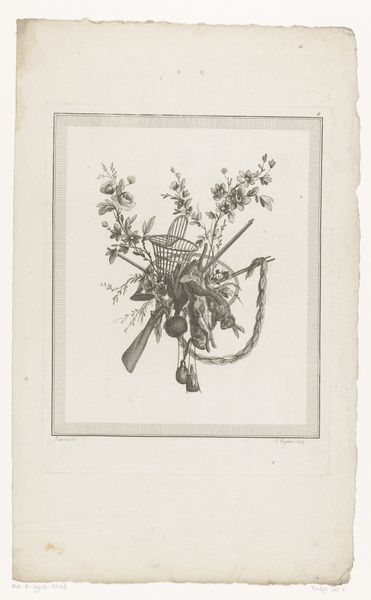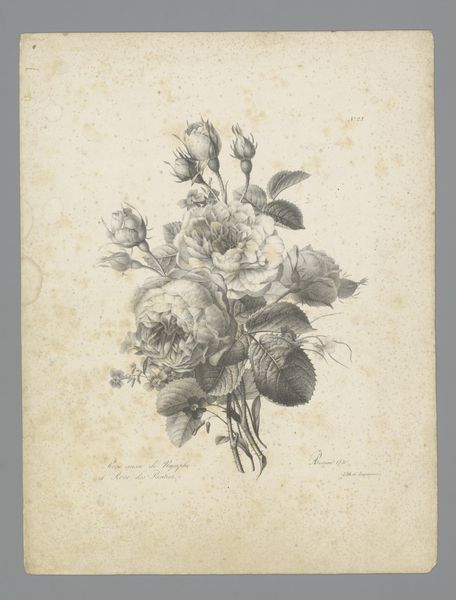
print, engraving
# print
#
landscape
#
academic-art
#
engraving
#
realism
Dimensions: height 311 mm, width 481 mm
Copyright: Rijks Museum: Open Domain
Editor: Here we have "Rozen," a print made between 1820 and 1833, currently held at the Rijksmuseum. It's quite delicate, almost like a pressed flower meticulously preserved. What first strikes you when looking at it? Curator: The symbolism inherent in floral depictions always fascinates me. In this engraving, observe the rose itself. It's never simply about the beauty of nature. The rose has long been tied to ideas of love, secrecy, and sometimes even death. Editor: Death? That’s interesting. It feels more romantic than morbid at first glance. Curator: Consider the wilting quality hinted at within the blooms and stems. The petals begin to fade. What might that imply about the nature of beauty and its temporal qualities? How does this compare with the concept of 'memento mori' we see elsewhere? Editor: So, it’s about more than just pretty roses. It’s about the fleeting nature of beauty and maybe a quiet acknowledgement of mortality. Does the artist’s choice of engraving have any bearing on that symbolism? Curator: Absolutely. Engraving allows for precise detail, almost scientific observation, which gives these images a quality of realism – perhaps hinting at a ‘truth’ within the beauty, or indeed a darker truth beneath. It mimics a preserved specimen, like an entomologist's pinned butterfly, which could evoke thoughts about a bygone era or tradition. Editor: That connection makes a lot of sense. I never would have thought to associate those deeper meanings with an image that seems, at first, purely decorative. Curator: The cultural memory associated with certain images runs deeper than just the surface. This piece really prompts us to see beneath initial impressions. Editor: Right. Looking at "Rozen" now, it's far more complex than a simple depiction of flowers; it's a meditation on time, beauty, and impermanence.
Comments
No comments
Be the first to comment and join the conversation on the ultimate creative platform.
